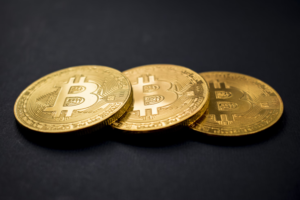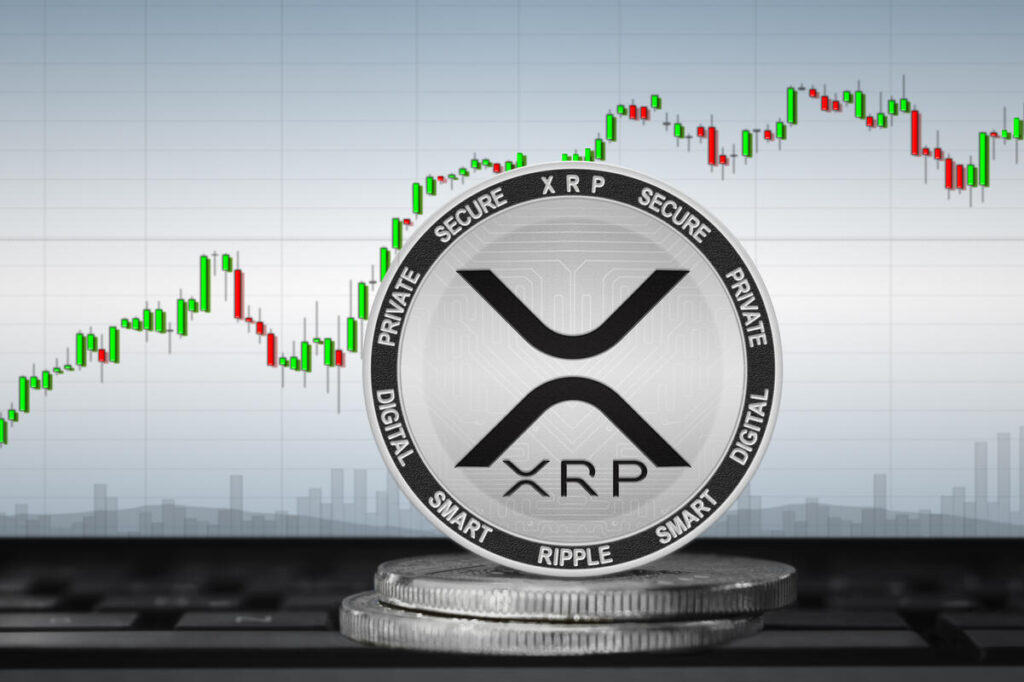Robert Kiyosaki, renowned author of the influential personal finance book “Rich Dad Poor Dad,” has reaffirmed his belief in the importance of assets like Bitcoin, gold, and silver as the specter of inflation looms large, endangering global living standards.
In recent times, the price of gold has surged past the $2,000 per ounce mark, demonstrating a consistent rebound in the face of diminishing fiat currency values.
As a staunch advocate for the Bitcoin ecosystem, Kiyosaki used his platform, with over 2.4 million followers on X (formerly Twitter), to encourage people to reduce their exposure to fiat currencies, which he dismissively referred to as the “fake money system.”
Kiyosaki, known for his candid and often unconventional financial advice, declared that individuals attempting to save money through traditional means are destined to fall short.
Instead, he recommended alternative forms of investment, including gold, silver, and Bitcoin, asserting, “Don’t be a loser. Get out of the FAKE money system.
Get into gold, silver, Bitcoin now… Before it’s too late.”
READ MORE: Zipmex Halts Digital Asset Trading in Thailand to Comply with Regulatory Requirements
On November 23rd, Kiyosaki pointed the finger at what he termed the “woke government” for the mounting inflation and the ensuing daily struggles faced by ordinary citizens.
He remains resolute in his choice to convert his fiat assets into Bitcoin and precious metals, underscoring his belief that political leaders are indifferent to the well-being of the populace, ultimately leading to conditions of strife and impoverishment.
As early as October 20th, Kiyosaki had forecasted that the price of gold would soon surpass $2,100, and he anticipates a further rally to $3,700 in the not-so-distant future.
In a bold prediction made in August 2023, Kiyosaki foresaw Bitcoin’s value reaching $100,000, taking into account the geopolitical tensions that posed a threat to global prosperity.
However, he also painted a vivid picture of what might transpire should the stocks and bonds market plummet.
In such a scenario, Kiyosaki envisions Bitcoin’s price skyrocketing to an astonishing $1 million, while the value of gold and silver would surge to $75,000 and $65,000, respectively.
In a world grappling with economic uncertainties and growing inflationary pressures, Kiyosaki’s unorthodox investment advice continues to capture the attention of individuals seeking to safeguard their financial futures.
Hive Digital Technologies, the cryptocurrency mining firm, has announced ambitious expansion plans aimed at strengthening its global presence.
The company has inked a property transfer deal with Turis AB to acquire a data center located in Boden, Sweden.
This facility was previously constructed as part of the European Union’s Horizon 2020 initiative.
Hive’s strategic move aims to bolster its existing operations in Sweden, where it already operates a data center.
The newly acquired property will be utilized for various purposes, including accommodating their next-generation ASIC servers and increasing Bitcoin production.
Johanna Thornblad, Hive’s country president for Sweden, emphasized the importance of the new data center in expanding their regional footprint and reaffirmed their commitment to environmental sustainability and energy efficiency through the use of “green” energy.
Hive Digital Technologies currently manages data center facilities in Canada, Sweden, and Iceland.
Notably, the company prioritizes environmentally friendly practices by using green energy sources for its cryptocurrency mining operations.
Regarding this development, Cointelegraph has sought additional information from Hive.
In a strategic shift earlier in 2023, Hive removed the term “blockchain” from its official name to reflect its evolving focus on financial opportunities in artificial intelligence (AI), cloud computing, and graphics processing units (GPUs).
The company intends to leverage its substantial GPU inventory of 38,000 Nvidia GPUs to provide small and medium-sized businesses with a more efficient alternative to major cloud service providers.
Hive’s CEO, Aydin Kilic, and Chairman, Frank Holmes, clarified in an interview with Cointelegraph that their pivot toward AI does not diminish their commitment to Bitcoin and crypto mining.
They emphasized that “blockchain and AI can certainly co-exist” and remain “pillars of Web3.”
Furthermore, Hive Digital Technologies participated in the launch of the Digital Power Network (DPN) in September.
This coalition, associated with the Chamber of Digital Commerce, advocates for the significance of proof-of-work (PoW) mining, further highlighting the company’s involvement in the cryptocurrency mining industry.
Amidst the ongoing controversy surrounding cryptocurrency media outlet Bankless and its associated decentralized autonomous organization (DAO), BanklessDAO, the co-founders of Bankless, David Hoffman and Ryan Sean Adams, have proposed a separation of the brand from the DAO.
This decision follows community criticism of BanklessDAO’s application for a grant from Arbitrum, a layer-2 scaling project for the Ethereum blockchain, which requested 1.82 million Arbitrum (ARB) tokens, valued at approximately $1.8 million at the time.
Hoffman and Adams announced their intention to submit a governance proposal to BanklessDAO, aiming to decouple the two entities.
As part of this proposal, they also plan to burn all of their BanklessDAO (BANK) tokens.
The key concern expressed by the community was that BanklessDAO might not have the capacity to make such significant proposals without relying on the reputation of the Bankless brand, which they did not create and should not benefit from, according to Hoffman.
The BanklessDAO community swiftly criticized the grant proposal, emphasizing the lack of detailed information about how the funds would be utilized for content creation.
READ MORE: Zipmex Halts Digital Asset Trading in Thailand to Comply with Regulatory Requirements
In response, BanklessDAO pledged to revise the proposal by reducing the one-year grant to three months and providing clear key performance indicators and milestones.
The dispute escalated on social media, with some commentators accusing Bankless founders of “legitimacy grifting” by claiming that BanklessDAO was entirely distinct from Bankless.
Others criticized them for promoting projects like Nexo and questioned their authenticity.
In response to the criticism, Adams defended the practice of creators running ads, arguing that labeling them as grifters was an attempt to consume content without compensation.
He emphasized that paid subscribers have always supported the mission of Bankless.
Founded in 2019, Bankless is a crypto media company that advocates for the adoption and awareness of bankless monetary systems.
In May 2021, they launched Bankless DAO, a decentralized community dedicated to coordinating and promoting bankless media, and introduced the BANK token.
In April 2023, Bankless founders revealed their plans to establish a $35 million venture capital fund for investments in early-stage Web3 companies.
Bitcoin is embarking on a new week, maintaining its position near its highest levels in the past 18 months.
The cryptocurrency’s price action surged above $38,000 last week, but it has since been trapped within a “micro-range,” leaving traders uncertain about the next move.
The pressing question on everyone’s mind is whether a deeper retracement is in store or if Bitcoin will continue its ascent to reach $40,000, potentially leaving doubters behind.
In the coming days, several potential catalysts could determine the direction of Bitcoin’s trend, and there are indications that the market is primed for a boost.
Volatility is expected to increase with the monthly close on the horizon, but before that, a series of macroeconomic events could bring unexpected price action.
The monthly close holds significant importance for day traders, with Bitcoin currently at a critical juncture.
Untested liquidity levels on the downside and resistance around the $40,000 mark have created a stubborn daily trading range.
Bulls and bears have struggled to break free from this narrow corridor, with even new higher highs being short-lived.
As of the latest weekly close, Bitcoin experienced a brief drop to $37,100 before recovering.
READ MORE: California Governor Advocates GenAI Education to Secure the State’s Economic Future
Traders are now eagerly awaiting bid momentum to return, with key levels at $37,000 and $38,000 to watch closely.
The monthly close approaches, and Bitcoin has seen a 7.8% increase month-to-date in November 2023, which is considered average compared to previous years.
In addition to the monthly close, Bitcoin traders are also anticipating a week filled with macroeconomic events.
The United States Federal Reserve will receive crucial inflation data that will influence its interest rate policy decisions in the coming month.
Fed Chair Jerome Powell is set to speak on December 1, following comments from other senior Fed officials.
The GBTC (Grayscale Bitcoin Trust) is nearing parity with its underlying asset pair, BTC/USD, indicating a positive shift in market sentiment.
The fund’s resurgence is seen as a sign of growing institutional interest in Bitcoin, particularly if the U.S. approves its first spot price exchange-traded fund (ETF).
Bitcoin miners are deploying record processing power to the network in anticipation of the upcoming block subsidy halving in April 2024.
The hash rate, a measure of this deployment, recently surpassed 500 exahashes per second, a significant milestone.
Meanwhile, BTC exchange balances are declining once again, with major exchanges holding the lowest amount of BTC since April 2018, driven in part by recent regulatory actions and hacks affecting some exchanges.
Zipmex, a prominent cryptocurrency exchange, has recently taken decisive action to comply with regulatory requirements in Thailand.
In an official statement released on November 25, the exchange announced the suspension of all digital asset trading activities in the country.
This move comes as part of Zipmex’s commitment to aligning itself with the regulations set forth by the Securities and Exchange Commission (SEC) of Thailand.
The statement from Zipmex read, “To ensure that the business operations of Zipmex Company Limited (‘Company’) are appropriate and compliant with the criteria set by the SEC Thailand, the company is required to temporarily suspend the trading and depositing of all types of assets, effective from November 25, 2023, at 1:00 PM onwards.”
It further emphasized that customers seeking to withdraw their funds or assets should directly contact the exchange.
Additionally, the statement highlighted a crucial deadline for customers: “After January 31, 2024, when the company suspends withdrawals through the website and mobile application, customers are required to contact Customer Support for withdrawals.”
READ MORE: Ethereum’s Resilience: Price Holds Above $2,000 Amidst Binance’s Regulatory Challenges
This proactive approach aims to ensure that customers can access their assets smoothly during this transitional period.
This decision to suspend operations follows a series of challenges that Zipmex has faced in recent times.
Back in April, the exchange made headlines when it delayed payments to its customers in an effort to maximize returns.
Furthermore, Zipmex sought an extension to extend the moratorium on its debt in Singapore due to liquidity issues.
The SEC of Thailand had also been closely scrutinizing Zipmex. In January, the exchange became the subject of an SEC probe for alleged breaches of local regulations.
The SEC gave Zipmex a one-day ultimatum to admit or deny operating as a digital asset fund manager without proper authorization.
This investigation had been ongoing, with the SEC filing a police report in September 2022, accusing Zipmex and its co-founder, Akalarp Yimwilai, of noncompliance with local laws.
One of the specific concerns raised by the SEC was Zipmex’s failure to provide information on digital wallets and crypto transactions in accordance with Thailand’s Digital Assets Act. Zipmex’s decision to temporarily suspend trading and align with regulatory requirements in Thailand represents a significant step towards addressing these concerns and ensuring compliance with local laws.
XRP’s price is gearing up for a potential rally of more than 20% in the upcoming weeks, thanks to a classic bullish continuation pattern known as the bull flag.
This pattern typically emerges after a strong uptrend and is characterized by a period of consolidation within a parallel channel.
The breakout from the bull flag occurs when the price convincingly breaches the upper trendline and surges by a magnitude similar to the previous uptrend.
As of November 26, XRP was trading above the upper trendline of its bull flag, although with weaker trading volumes.
This suggests that there might be some uncertainty among traders regarding the sustainability of XRP’s bullish trend.
Consequently, there is a possibility that XRP’s price could test the flag’s upper trendline as a support, potentially leading to a decline towards the $0.59 level.
This level aligns with historical support and the 50-day exponential moving average (50-day EMA).
Additionally, this $0.59 level coincides with XRP’s downside target on the weekly timeframe chart.
However, if the bull flag scenario remains intact and is accompanied by a substantial increase in trading volume from the upper trendline, XRP could see a resurgence, climbing to around $0.75 in December, representing a gain of more than 20% from its current levels.
READ MORE: Hong Kong’s Hospital Authority Harnesses AI to Tackle Rising Superbug Threat
Conversely, a break below the bull flag’s upper trendline could postpone the bullish continuation setup, potentially bringing the lower trendline near $0.54 into play.
This level corresponds to the 200-day EMA (the blue wave) and would serve as the next downside target.
On-chain data for XRP indicates a bullish sentiment, primarily due to significant accumulation by its wealthiest addresses.
Whales, defined as addresses holding between 100,000 and 10 million XRP tokens, have acquired approximately $6.82 million worth of XRP tokens over the past week.
This accumulation by influential players suggests a strong belief in an impending price increase in December, aligning with the anticipated bull flag pattern.
However, it’s essential to consider that the outcome of the ongoing legal battle between Ripple and the United States Securities and Exchange Commission (SEC) could significantly impact XRP’s future price movements.
While XRP has surged nearly 85% in 2023, driven by Ripple’s partial win against the SEC, the court is yet to rule on whether Ripple’s XRP sales to institutional investors violated U.S. securities laws.
The trial is set to resume on April 23, 2024, with many legal experts anticipating a potential settlement.
A settlement below $20 million, according to crypto attorney John Deaton, would be considered a significant victory for Ripple, with a high likelihood of such an outcome.
Indexed Finance, an Ethereum-based project that faced a devastating $16 million hack in 2021, has emerged victorious in thwarting two recent hijacking attempts, paving the way for the return of control over the project’s decentralized autonomous organization (DAO) to its founders.
Their noble intention is to allocate the remaining treasury to those who fell victim to the 2021 breach.
Former core contributor Laurence Day took to X (formerly Twitter) to provide a comprehensive account of the valiant efforts made by the Indexed community in fending off these two hijacking endeavors, which targeted the DAO’s treasury containing approximately $120,000 worth of digital assets in NDX tokens.
The first hijacker, in a rather clandestine move, submitted a proposal without a title or description in an apparent attempt to evade detection.
However, Day and the vigilant community members rallied the Indexed DAO for votes against this nefarious proposal.
Although the attacker’s proposal came perilously close to approval within an hour, a sufficient number of “No” votes were cast to prevent its passage.
Recognizing the need to stay one step ahead, the Indexed DAO, fearing a potential copycat attack, swiftly approved a “poison pill” proposal.
This measure granted the DAO the authority to burn the remaining treasury funds if deemed necessary as a deterrent against future attackers.
READ MORE: Ethereum’s Resilience: Price Holds Above $2,000 Amidst Binance’s Regulatory Challenges
In the face of the impending second attack, the assailant initially sought to negotiate for a 50% share of the remaining treasury, as revealed in on-chain messages.
Indexed founder Dillon Kellar responded by proposing $10,000 worth of Dai while warning of the possibility of burning the entire treasury if the attacker persisted in their malevolent intentions.
As the clock ticked down with only four hours remaining until Kellar’s ultimatum, and despite an attempt by the attacker to counter-negotiate for $17,000, they ultimately acquiesced to the original offer and withdrew their malicious proposal.
Consequently, authority over the DAO will be reinstated to a multisig controlled by Day, Kellar, and the pseudonymous co-founder PR0.
Their immediate objective is to utilize the remaining treasury funds to compensate the victims of the harrowing 2021 hack.
Indexed Finance’s triumphant defense against these hijacking attempts not only preserves the integrity of the project but also stands as a testament to the resilience and dedication of its community and founders in ensuring justice for those affected by the past breach.
Bitcoin remained steady at around $38,000 as the week came to a close on November 26, bolstering the confidence of traders in the cryptocurrency’s price prospects.
Throughout the weekend, Bitcoin displayed its characteristic stability, with notable price fluctuations yet to materialize.
In recent days, Bitcoin had reached new heights not seen in 18 months, signaling positive indications for a potential upward trajectory.
Prominent trader and analyst Credible Crypto was among those who observed buyers effectively absorbing any selling pressure near the local price peaks.
With open interest in derivative markets staying relatively low and consistent demand for Bitcoin in the spot market, conditions appeared ripe for a potential upward movement.
Credible Crypto noted the potential for shallow dips in Bitcoin’s price due to the lack of open interest capable of triggering liquidation events, coupled with the evident demand at these price levels.
READ MORE: Montenegro Court Approves Extradition of Terraform Labs Co-Founder Do Kwon
Credible Crypto even suggested that his earlier prediction of a return to $36,900, a mere 2.1% drop from the current spot price, might not materialize as anticipated.
Another market analyst, Titan of Crypto, expressed optimism about Bitcoin’s immediate future. Using the Ichimoku Cloud indicator, Titan of Crypto identified a notable breakout in its key components, a rare occurrence in Bitcoin’s weekly chart.
The lagging span of Ichimoku, known as Chikou, which measures data from 26 weeks prior, was positioned above the price and at the top of the Kumo Cloud.
Furthermore, both Tenkan-sen and Kijun-sen exhibited a renewed uptrend, painting a highly promising picture for Bitcoin’s potential upward trajectory, according to Titan of Crypto.
Commenting on the price action, Titan of Crypto pointed out that recent weekly candles indicated resistance from bullish forces, as evidenced by the candle wicks pushing back against potential downward movement.
Overall, Bitcoin’s stability around the $38,000 mark, coupled with positive sentiment from prominent traders and analysts, suggested that the cryptocurrency market was poised for potential upward movement in the near future.
However, the actual direction of Bitcoin’s price remained dependent on factors such as market demand and open interest in derivative markets.
The governing body of the Cosmos Hub has approved a proposal to reduce the maximum inflation rate of its native token, Cosmos (ATOM), from 14% to 10%.
This decision aims to address concerns about the high inflation rate and its impact on the network’s security and token price.
As per the proposal, this adjustment would result in a decrease in ATOM’s annualized staking yield from approximately 19% to around 13.4%.
The Cosmos Hub serves as the primary blockchain within the Cosmos network, a interconnected system of blockchains.
ATOM tokens play a vital role in staking, governance, and covering transaction fees within the network.
The proposal faced a close vote, with 41.1% of votes in favor and 38.5% against.
Initially, it seemed likely to fail, but a last-minute surge in votes, along with some validators changing their positions, tipped the balance in favor of the proposal.
The proposal argued that the high inflation rate had led to overspending on security within the Cosmos Hub. It also contended that validators could still maintain profitability with a reduced inflation rate of 10%.
READ MORE: Australian Tax Regulator’s Cryptocurrency Tax Guidance Leaves DeFi Users in the Dark
The entity with the highest number of votes in favor of the proposal, Zero Knowledge Validator, took to X (formerly Twitter) to explain its support.
They stated that double-digit inflation was unnecessary for security and could undermine the long-term value of ATOM.
Moreover, it could discourage the use of ATOM in decentralized finance (DeFi) and other applications within the Atom Economic Zone.
On the opposing side, AllNodes, a validator, voiced its concerns on X.
They argued that the proposed change might negatively impact small validators and described it as “an abrupt, short-sighted, and ill-researched idea” that could disrupt retail and businesses engaged in building, trading, and validating ATOM.
Notably, the Cosmos Hub recently underwent an upgrade to introduce a liquid staking module.
This enhancement allows users to avoid the previous 21-day unbonding period when unstaking ATOM tokens.
Prior to this upgrade, ATOM holders had to wait 21 days before moving their funds after unstaking.
With the new module, staked ATOM can be utilized in the Cosmos decentralized finance ecosystem without compromising staking rewards, offering greater flexibility to token holders.
Investment managers in the United Kingdom are receiving regulatory backing to embrace blockchain technology for fund tokenization, a departure from traditional record-keeping practices.
A recent report from the Investment Association underscores the potential benefits of fund tokenization, involving the issuance of tokenized units or shares using distributed ledger technology (DLT).
This innovation is anticipated to usher in a more efficient and transparent financial industry.
Fund tokenization would introduce a real-time record-keeping system shared among all parties involved in servicing the fund.
This would result in reduced fund administration costs, simplified reconciliation processes, and faster settlement times.
Sarah Pritchard, the executive director of markets and international at the Financial Conduct Authority (FCA), emphasized the regulator’s openness to exploring innovative avenues while acknowledging the need to address potential risks.
She stated, “This is an exciting milestone and paves the way for exploring more transformative use cases in the future.
“We want to support firms to implement technological solutions which enhance and strengthen the UK’s asset management industry, while addressing risks and potential harms.”
The report also outlines key principles for the implementation of tokenized funds.
READ MORE: Ethereum’s Resilience: Price Holds Above $2,000 Amidst Binance’s Regulatory Challenges
These principles stress the importance of catering to both domestic and international investors, avoiding a narrow focus on the investment asset manager industry, and providing opportunities to a wide range of firms in the sector.
Additionally, the report calls for the creation of a delivery roadmap and a focus on enhancing competitiveness and efficiency within the sector.
It specifies that tokenized funds must be established in the UK, FCA authorized, and compliant with traditional financial industry standards, with no change in existing legal and regulatory rules.
The UK government has expressed its support for this blueprint model, signaling its commitment to fostering innovative approaches within the country’s asset management industry.
The government views this development as a positive step toward advancing technology’s role in asset management and as a testament to the UK’s openness to innovation.
This regulatory support coincides with recent reports of investment firms in the UK strengthening their digital asset divisions.
A significant number of asset managers and hedge funds in the US, UK, and Europe have hired senior executives to oversee digital asset strategies.
According to a survey, 24% of asset management firms have already adopted digital asset strategies, while an additional 13% plan to do so in the next two years, reflecting the industry’s growing interest in digital assets and blockchain technology.













